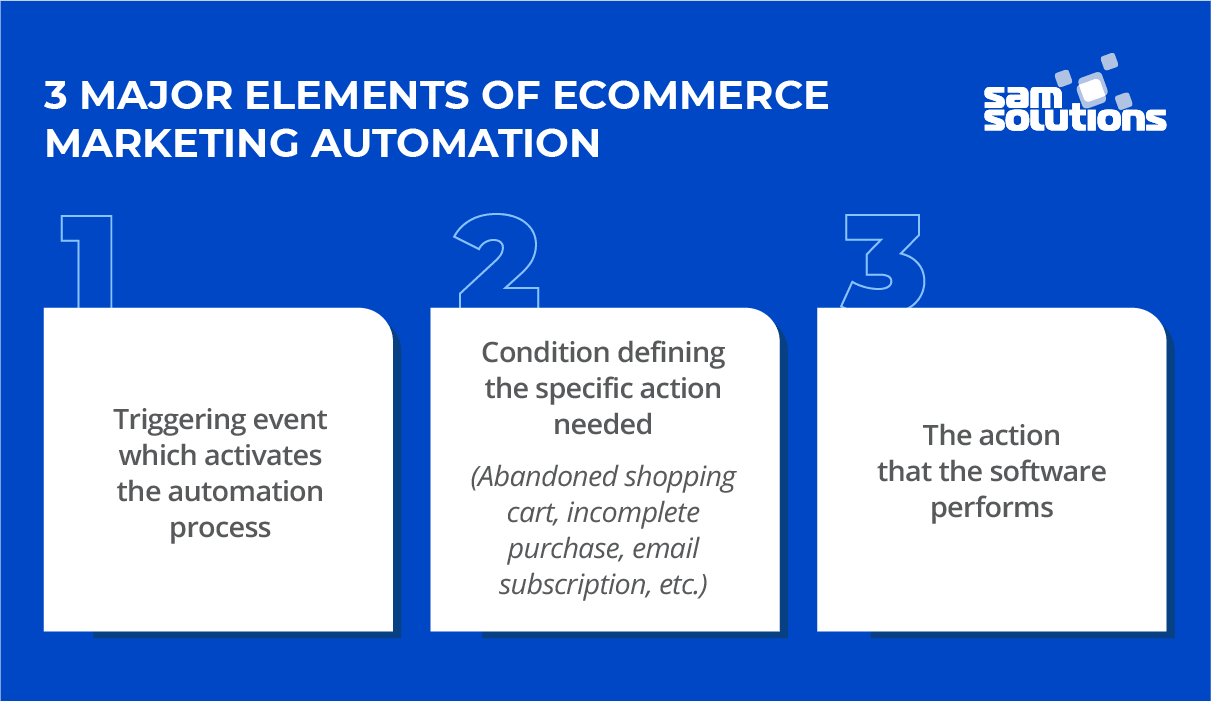
In recent years, it has become increasingly common for businesses to integrate social media feeds into their websites. This provides customers with quick access to posts from their favorite sites. It also helps build brand awareness and creates a sense of community. Keeping track of the latest social media updates can be time-consuming and cumbersome, so having an easy way to stay up-to-date with what your business is doing is crucial.
Using Sharepoint to Add RSS Feeds
SharePoint provides many features for enabling the integration of various types of content into your site. One of these is really simple syndication (RSS). This allows users to subscribe to news, blog posts, and other content on your site and receive notifications when changes are made in the content.
To enable RSS on your site, you must first make sure that RSS is turned on for the site. You can do this by clicking the RSS link in the Site Administration section of the Site Settings page.

Then, you must select the list, library, or view that you want to add an RSS feed to. You can also use the Modify RSS Settings page to customize the feed's settings, such as the title and columns.
How to Create a RSS Feed on SharePoint
When you add an RSS feed to your site, you can configure how the content will appear in an RSS reader. For example, you can set the number of items to display or how often the feed is updated. In addition, you can use views to filter or sort the feed's information.
How to Create an RSS Feed Web Part
Microsoft has introduced a web part that allows you to easily integrate an RSS feed into your site. This is a great solution for those who are looking to add this functionality to their site without having to code it themselves.
However, the web part does not look very nice and lacks support for many modern SharePoint features. It is important to familiarize yourself with the limitations of this web part before implementing it in your site.

How to Use Power Automate for an RSS Feed Web Part
If you have the RSS connector installed, you can create a Power Automation that is triggered by the connector and puts new RSS feed items into a SharePoint list. In order to make this work, you need to have a fairly simple view formatter that does the formatting.
How to Create an RSS Feed Widget on Your Site
You can create a feed widget for your site by using the SharePoint Online Web Parts Gallery. This will provide you with a wide variety of different templates that can help you achieve a look and feel for your site.
You can also create your own custom templates to match the look and feel of your site. The RSS widget is a relatively easy process to implement and is a great way to increase engagement on your site. You can even create a custom template that includes a search bar to allow users to easily find information on your site.
FAQ
Is WordPress capable of marketing automation?
WordPress marketing automation is an automated process which allows marketers to manage and create content for their WordPress website. It can be used by developers, marketers or anyone else who needs to quickly create and execute complex tasks.
It works by setting up triggers, creating workflows, and triggering when someone performs a certain act, such as visiting a webpage or opening an email. This automation system is also useful for updating pages, sending out emails, scheduling social media posts, and so on.
WordPress marketing automation lets you send customized messages to users based on their interests and behaviors. This allows you to optimize marketing efforts across multiple channels.
Similarly, you can track the success of your campaigns with detailed analytics reports that show which sources the lead came from so you can focus more effort on the most fruitful paths for growth.
Marketers can instead focus on improving customer experience and not worrying about mundane processes such as website updates or email management flow.
You can also expect higher conversions since customers won't need to wait for long periods before you respond to them. This is due to the better integration between sales and marketing departments working on similar projects in realtime.
In addition, WordPress marketing automation powers small businesses with the ability to identify leads faster which significantly decreases cost per acquisition while providing valuable insights into the impact of their campaigns in real time.
Last but not least, using this automated platform eliminates human error and profit losses because it operates according to preconfigured rules you set up in advance within its back-end system settings.
What is SEO automation?
Automation in SEO is the use of technology to automate marketing-related tasks and processes. Automation helps reduce time, costs, and improve the efficiency of execution. Automating SEO activities can streamline content creation, keyword research and link building. Automated SEO tools provide data-driven analysis which identifies high-value potential opportunities that might otherwise be difficult to spot using traditional search engine optimizing methods.
It's nearly impossible to do anything in SEO these days. That includes everything from monitoring websites performance and competitor insight to optimizing content for better search engines rankings.
Automation works in the background so teams can focus on strategic initiatives and not get bogged down in manual tasks. Automation helps to deliver rapid improvements across many metrics in order to maximize ROI and save valuable resource.
It also allows you to keep up with the changes occurring across search engines. This will ensure that your website remains competitive in a constantly changing digital landscape.
Automation can also help you create and distribute content more efficiently. Automated SEO tools allow you to quickly generate keyword-rich content that meets the needs of your target audience. You can also use automation to schedule and publish content on various channels, including social media, blogs, and websites. This helps ensure that your content reaches a wider audience and gets more visibility in search engine results pages (SERPs ).
What is WordPress marketing automation?
WordPress marketing automation enables you to automate, streamline, and efficiently manage all your online content and communications. It allows you to automate tedious or time-consuming tasks.
Automating helps businesses save time as well as ensure consistent brand promotion across all channels. They also have the ability to engage customers in real-time with their brands. Automation also simplifies complex tasks such as data analysis and segmentation so that marketers can focus on creating strategies based on accurate insights rather than looking through huge amounts of data manually.
WordPress marketing automation's core features include setting up powerful triggers for emails to be sent based on visitor activities and personalizing customer journeys with messages that meet the needs of existing and potential customers. Tracking detailed reports on website activity and ROI performance are also included to help measure the effectiveness of campaigns.
WordPress marketing automation lets businesses automate repetitive tasks while increasing their marketing performance through better marketing resources. All this while keeping costs low.
What example is there of marketing automation?
Marketing automation is the technology that allows businesses to automate manual marketing processes like responding to customer emails, collecting data from your website, and managing multiple digital campaigns. It can send automated emails based upon customer behavior, segment customers into different groups and create new contacts whenever someone signs up to a newsletter. With marketing automation, you can spend less time on tedious tasks and more time focusing on what really matters - reaching out to your customers. It makes it easy to manage multiple campaigns simultaneously and automates repetitive tasks, which can help increase efficiency.
One example of marketing automation is using an automated email campaign to nurture leads. This campaign involves sending multiple emails to prospects over a set period. The emails are customized to the recipient and can contain content such as case studies, product information, and discounts. Automated mail campaigns let you track customer behavior and adapt your messages accordingly. You can reach more customers quickly with automated email campaigns.
Another example of marketing automation involves social media automation. This involves posting content and scheduling it across multiple social channels to reach a wider audience. Hootsuite/Buffer automation tools allow you to manage all your accounts and schedule posts ahead. You can also track the performance of your campaigns using tracking software. Automation in social media can help you save time, allowing to publish content at the best times for maximum engagement. It makes it easier to reach more people with less clicks.
Marketing automation can also help create customized customer experiences. Automation tools like HubSpot and Pardot allow businesses to segment customers into different groups based on their behavior and preferences. This allows you customize messages and content for each group to create a more customized experience for each customer. Automation also helps you track customer activity and engagement so that you can better understand their needs and preferences.
Marketing automation is a powerful tool which can save businesses time and increase efficiency. It can be used to automate manual tasks as well as nurture leads, manage social accounts, and create personalized customer experiences.
Marketing automation can give businesses a competitive edge by giving them a competitive advantage. Automation can streamline processes, cut costs, and improve efficiency. Automation helps businesses reach more people in less time. It automates repetitive tasks and crosses-posts content across multiple platforms. By segmenting customers into different groups, and tailoring messages accordingly, marketing automation allows businesses to create customized customer experiences. Marketing automation is a powerful tool that businesses can use to save time and increase their efficiency.
Is marketing automation the future of marketing?
Marketing automation is using technology and software to streamline, automate, monitor, and measure marketing tasks. It makes it possible to use more complex tasks like customer behavior data analysis and personalized engagement. It automates mundane tasks like segmentation, testing, personalizing and tracking website visits, behavior, managing customer interactions across channels, and more.
The future of marketing automation lies with its ability make customer journeys easier and more easily understood. Marketers can track customer journeys across channels using richer data sources, such as social media platforms and connected devices. This will allow them to create customized experiences that engage customers at all touch points. This will allow marketers to design highly targeted, agile strategies.
This will enable marketers to automate decisions and increase efficiency, as well as artificial intelligence (AI). AI-powered bots can handle repetitive tasks like answering customer FAQs or scheduling email appointments. Marketers can then focus on the more complex tasks that require human intelligence such as refining the content strategy, understanding customer sentiments on specific products, and other important tasks.
With the growing acceptance of automated marketing tools among small businesses and advances made in predictive analytics technologies, which generate insights from data collected by marketing automation, it's safe for us to predict that automated marketing will continue rising in popularity as 2021 approaches.
Marketing automation can be a powerful tool to help businesses compete in today's market. With the right tools and strategies, businesses can save time and resources while creating personalized customer experiences. Businesses can improve response rates and customer satisfaction by leveraging customer segmentation. As technology improves, marketing automation will play an increasingly important role in helping businesses remain competitive in the future.
What are the top four features of marketing automation?
Marketing automation software promises to simplify and improve digital marketing processes while providing meaningful insights based on your business goals. You can make tangible improvements in efficiency and drive results with the right marketing automation software. These are the four most important features of marketing automation tools:
-
Automated campaigns: Automation makes it easier and more efficient to manage complex campaigns by leveraging automated tasks which trigger based user behavior or other event.
-
Analytics & Insights - Use advanced analytics to gain insight about customer behavior and optimize future campaigns.
-
Customer Segmentation: Use customer segmentation to make sure that each campaign is personalized and targeted for maximum success.
-
Messaging: You can send automated messages to every customer segment. This improves both the response rate and satisfaction.
By leveraging the right marketing automation software, businesses can save time and resources while creating personalized customer experiences. Automation tools let you segment customers based upon their behavior or preferences. They can also track customer activity, engagement, and send targeted messages. Marketing automation can be a valuable tool to help businesses succeed in today’s competitive market.
Which marketing automation tool is the best?
It can be challenging to find the best marketing automation solution for your business. There are so many options, it can be hard to decide which one is the best.
You need something that will save you time, money, hassle, and can be relied upon. You need it to generate leads, increase customer retention, or increase sales with little effort.
It should be reliable, simple to operate, and offer excellent customer service in case of issues. It must be able to perform activities such as email marketing, segmentation by customer interest or behavior, multichannel nurturing of leads and insightful reporting.
It is important to remember that the software can provide you with clear visibility of customer journeys, as well as give you actionable insight into what triggers customers to buy so that you can design an effective strategy that addresses their needs.
Choose a marketing system that is user-friendly and supports data-driven progress tracking at all stages. It should also support robust personalization capabilities.
Statistics
- Even if your database is currently filled with quality leads, how effective will your marketing automation be when you've either converted all those leads into customers or when your database begins decaying by ~22.5%/year? (hubspot.com)
- The highest growth for “through-channel marketing automation” platforms will reach 25% annually, with “lead-to-revenue automation” platforms at 19.4%. (marketo.com)
- While they're doing that, their competition is figuring out how to get more out of the 99.99% of the market that's still out there. (hubspot.com)
- Marketing automation is one of the fastest-growing technologies out there, according to Forrester's Marketing Automation Technology Forecast, 2017 to 2023. (marketo.com)
- Automator can probably replace 15% or more of your existing plugins. (automatorplugin.com)
External Links
How To
How do you measure the effectiveness and efficiency of your content marketing automation efforts
Asking the right queries is key to content market automation success. What works? What isn't? How can I better reach my target audience? An analysis of metrics such as conversion rates, engagement, social shares, lead generation, and social media will help you determine the effectiveness your campaigns.
By digging into the data to identify patterns and trends, you can gain insights into what tactics are best at driving results. This information will enable you to focus on optimizing the automation process to maximize efficiency and impact.
Beyond measuring tangible results, ask customers to tell you what they value about your content experience. Collecting feedback from them directly will help ensure that your campaigns are delivering meaningful messages that drive measurable results.
Summary: To assess the effectiveness of content marketing automation efforts, you need to do a combination of qualitative and quantitative analysis. Is your message getting across the right message? Are people clicking on or opening the link? Is your organization seeing a positive return on investment? Understanding what success looks like will help you quickly adjust your course.
Once you have established the definition of success, it is time for you to start optimizing content marketing automation. This means testing different strategies and tactics to see which ones are most effective for driving results. Try different types of content like videos, infographics or podcasts. You can also test out different timing and frequency of distribution to determine what resonates best with your audience. Your results will improve the more you experiment.